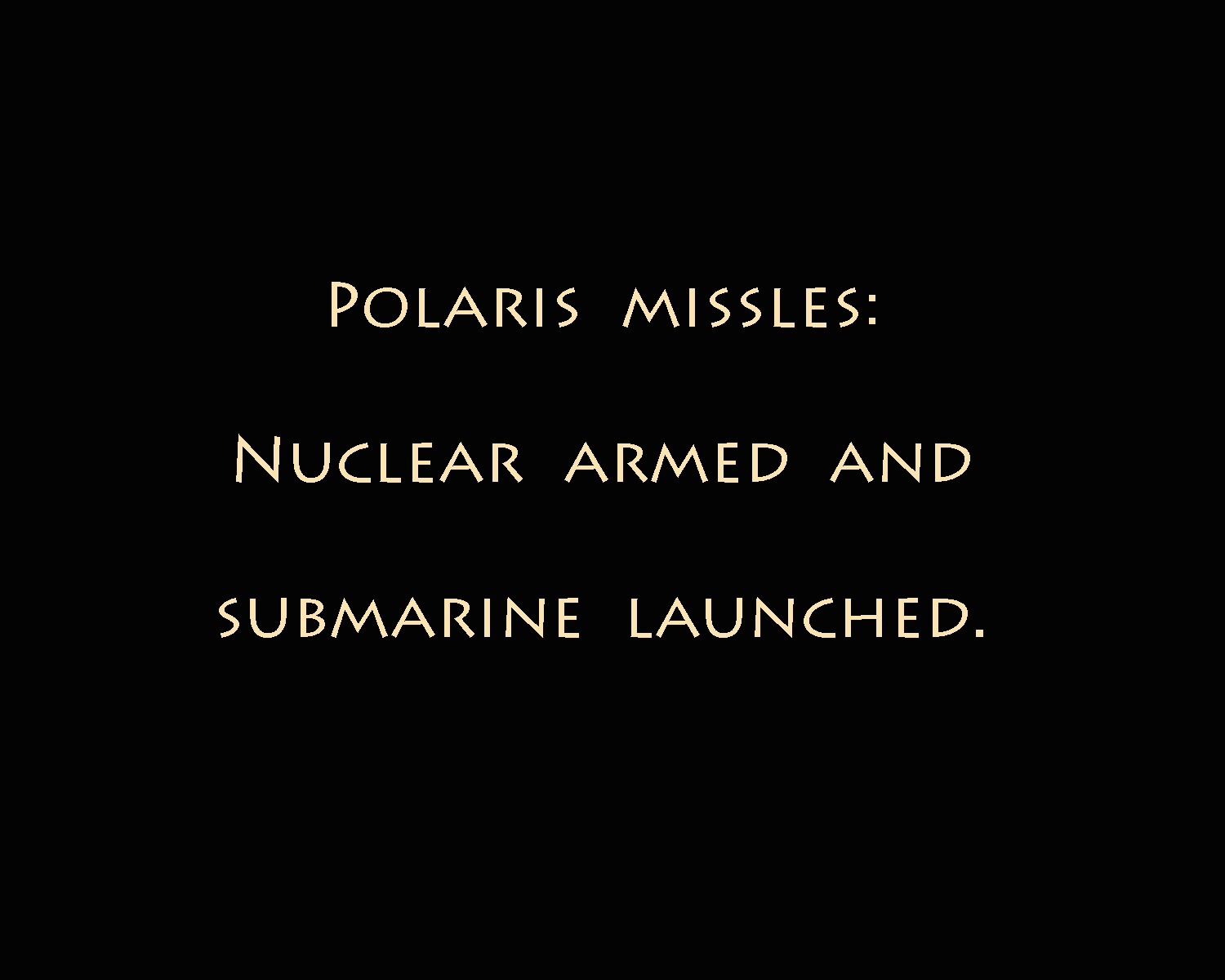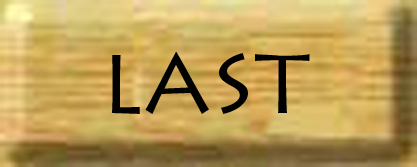
The Military Industrial Complex
On most of my adventures, banditos don't get your $90.
You hear a lot about "Baby Boomers", the result the explosion of pregnancies in the year after our boys returned from WW II. I am not one of those. I am a "War Baby"; born between December 1941 to August 1945. My father did not go to war. He was born in 1903;He was born in 1903. He came of age between World War I and World War II and was not called to join in. His father, my grandfather, emigrated from England in 1890 and became a Methodist preacher. He never went to war either. His father, my great grandfather, was a cooper and firewood merchant and had likewise never gone to war. On my mother's side there was no history of military service back through the centuries I've been able to trace.
I was just a kid, but I knew that our cowboys and Indians playacting, and the movies about battlefield heroics were glamorizing gory realities of large-scale murder and butchery. I did not look forward to taking part.
There were several avenues that would allow you to skip the military. One was to be enrolled and in good standing in college. That was considered a "deferment" that would expire if you graduated, or dropped out. Another was to be disqualified for physical, medical or psychological problems; and another was to claim to be a demonstrably "conscientious objector" to war in general.
Somehow I drifted onto a track that offered another option. In late 1962, I hadn't gone back to the University. I was hanging out in Carpinteria; surfing, taking odd jobs, crashing at my mom's house; when something new came into town. Some strangers were unloading a semi truck into an unused lemon packing house across from Colson's Garage, and they hired a few of us local kids to do the heavy work; moving truckload after truckload of machinery, tools and parts from a optical plant that had been dismantled in Wisconsin, to be reassembled in a new factory, "Infrared Industries".
The cargo was stacks of wooden boxes filled with cast iron tools: Some were shaped like bulbous mushrooms, and some were concave cups. They all had very precision geometry. It took us a couple of days to get the trucks unloaded. After finishing that I was invited along with several others to take part in the next step. Out Carpinteria Ave almost to where the Thunderbowl Raceway had been, a new building was just being finished: the future home of Infrared Industries. Some of us were invited to be in on the ground floor. It was an industrial optics plant, specializing in the production of glass lenses and mirrors. An entire factory in Wisconsin had been purchased with all its tools and machinery, dismantled, and it was being set up here. They also had brought along their foremen and a skeleton crew of production workers and machinists.
Our first task at the new factory was to assemble big steel racks to archive all those cast iron tools that were in the packinghouse down in Carp. The boxes were all the same width, but the heights varied, so each bay of the racks had a particular sequence of spaces to accommodate them. There was a specific layout to each vertical rack to allow for those different sized wooden boxes to be placed in a certain order so tools could quickly be found when needed. Once the racks were completed, our job was to load the boxes into their places.
It took a couple weeks to get all that gear put away, and in that time we got to know the foremen that had a keen interest in guiding our efforts. A couple of us were invited to take part in the next phase, which was setting up the factory.
Some parts of the factory were all set up and ready to get running. There were lots of jobs and I was put on a trajectory that would give me experience in the whole sequence of creating the company's precision lens assemblies. First step was turning glass slugs into their precise diameter.
Next was the "blocking". That's where they started me. You'd take one of those cast metal cups, and place the rounded glass discs in a particular way and then fill the cup with a tarry substance. We referred to it as "pitch". While the pitch was still molten you lowered one of those cast mushrooms into it with a sort of a drill press kind of rig and let it all cool. Thus the glass slugs were arrayed on the mushroom and ready for convex grinding. A similar procedure was use to secure glass into the cups for concave grinding. The output was sent to the next department for grinding and polishing. Then the tools with finished lens attached would come back to the blocking station for "de-blocking", which meant soaking the tools in a nasty smelling vat of carbon-tetra-chloride, until the pitch dissolved and freed the lenses.
Next I was running a glass lathe that ground the stack of flat glass slugs to a specified diameter. That was the very first step in becoming a lens, before blocking. After a month of that, I was moved to the stage after blocking; the actual lens grinding. It was surprisingly intuitive for such high tech optics. You stood over a trough with the mounted lenses in a spinning arbor. At different stages you used increasingly fine grits of emery clay, which produced an increasingly fine polish. You had to learn some subtle techniques with your hands to bring the glass to the precise radius you were aiming for.
In my next month I realized that I had been schooled in each of the production steps, up to where I was hand grinding those glass slugs into precision lenses using those cast iron cup and mushroom tools we first unloaded.
My last position was the "Clean Room". You had to put on a clean suit, mask and hair covering, and passed through an airlock to get in. We were given a lens system. They looked similar to a long SLR camera lens; a black cylinder with multiple glass lenses suspended at different levels within. Our job was to look through the lenses to see if there were any smudges, pieces of lint or hair. When you found a problem like that, you had to determine on which side of which lens. That was the trickiest part. Then you disassembled it, cleaned it and put it back together. I didn't like clean room work, and I wanted to get back to school.
I was called into the office one day. They realized I had plans to go back to UCSB and wanted to offer me help with my education if they could steer my studies into a field useful in the company. They said they would have no problem getting me a draft deferment because Infrared Industries was a defense contractor. The lenses I had been creating and inspecting were mainly for high tech missile guidance systems. Specifically, the Polaris missiles: nuclear armed and designed to be launched from nuclear submarines.
So there were some of the choices laid out for me: take a job with a defense contractor in the war machine, be a draft deferred college student, or embark on a Bohemian journey like the Johnsons. I took the latter two.





Copyright © 2022 John Oliver
All Rights Reserved
mail@unclejohnsweb.com

You hear a lot about "Baby Boomers", the result the explosion of pregnancies in the year after our boys returned from WW II. I am not one of those. I am a "War Baby"; born between December 1941 to August 1945. My father did not go to war. He was born in 1903;He was born in 1903. He came of age between World War I and World War II and was not called to join in. His father, my grandfather, emigrated from England in 1890 and became a Methodist preacher. He never went to war either. His father, my great grandfather, was a cooper and firewood merchant and had likewise never gone to war. On my mother's side there was no history of military service back through the centuries I've been able to trace.
I was just a kid, but I knew that our cowboys and Indians playacting, and the movies about battlefield heroics were glamorizing gory realities of large-scale murder and butchery. I did not look forward to taking part.
There were several avenues that would allow you to skip the military. One was to be enrolled and in good standing in college. That was considered a "deferment" that would expire if you graduated, or dropped out. Another was to be disqualified for physical, medical or psychological problems; and another was to claim to be a demonstrably "conscientious objector" to war in general.
Somehow I drifted onto a track that offered another option. In late 1962, I hadn't gone back to the University. I was hanging out in Carpinteria; surfing, taking odd jobs, crashing at my mom's house; when something new came into town. Some strangers were unloading a semi truck into an unused lemon packing house across from Colson's Garage, and they hired a few of us local kids to do the heavy work; moving truckload after truckload of machinery, tools and parts from a optical plant that had been dismantled in Wisconsin, to be reassembled in a new factory, "Infrared Industries".
The cargo was stacks of wooden boxes filled with cast iron tools: Some were shaped like bulbous mushrooms, and some were concave cups. They all had very precision geometry. It took us a couple of days to get the trucks unloaded. After finishing that I was invited along with several others to take part in the next step. Out Carpinteria Ave almost to where the Thunderbowl Raceway had been, a new building was just being finished: the future home of Infrared Industries. Some of us were invited to be in on the ground floor. It was an industrial optics plant, specializing in the production of glass lenses and mirrors. An entire factory in Wisconsin had been purchased with all its tools and machinery, dismantled, and it was being set up here. They also had brought along their foremen and a skeleton crew of production workers and machinists.
Our first task at the new factory was to assemble big steel racks to archive all those cast iron tools that were in the packinghouse down in Carp. The boxes were all the same width, but the heights varied, so each bay of the racks had a particular sequence of spaces to accommodate them. There was a specific layout to each vertical rack to allow for those different sized wooden boxes to be placed in a certain order so tools could quickly be found when needed. Once the racks were completed, our job was to load the boxes into their places.
It took a couple weeks to get all that gear put away, and in that time we got to know the foremen that had a keen interest in guiding our efforts. A couple of us were invited to take part in the next phase, which was setting up the factory.
Some parts of the factory were all set up and ready to get running. There were lots of jobs and I was put on a trajectory that would give me experience in the whole sequence of creating the company's precision lens assemblies. First step was turning glass slugs into their precise diameter.
Next was the "blocking". That's where they started me. You'd take one of those cast metal cups, and place the rounded glass discs in a particular way and then fill the cup with a tarry substance. We referred to it as "pitch". While the pitch was still molten you lowered one of those cast mushrooms into it with a sort of a drill press kind of rig and let it all cool. Thus the glass slugs were arrayed on the mushroom and ready for convex grinding. A similar procedure was use to secure glass into the cups for concave grinding. The output was sent to the next department for grinding and polishing. Then the tools with finished lens attached would come back to the blocking station for "de-blocking", which meant soaking the tools in a nasty smelling vat of carbon-tetra-chloride, until the pitch dissolved and freed the lenses.
Next I was running a glass lathe that ground the stack of flat glass slugs to a specified diameter. That was the very first step in becoming a lens, before blocking. After a month of that, I was moved to the stage after blocking; the actual lens grinding. It was surprisingly intuitive for such high tech optics. You stood over a trough with the mounted lenses in a spinning arbor. At different stages you used increasingly fine grits of emery clay, which produced an increasingly fine polish. You had to learn some subtle techniques with your hands to bring the glass to the precise radius you were aiming for.
In my next month I realized that I had been schooled in each of the production steps, up to where I was hand grinding those glass slugs into precision lenses using those cast iron cup and mushroom tools we first unloaded.
My last position was the "Clean Room". You had to put on a clean suit, mask and hair covering, and passed through an airlock to get in. We were given a lens system. They looked similar to a long SLR camera lens; a black cylinder with multiple glass lenses suspended at different levels within. Our job was to look through the lenses to see if there were any smudges, pieces of lint or hair. When you found a problem like that, you had to determine on which side of which lens. That was the trickiest part. Then you disassembled it, cleaned it and put it back together. I didn't like clean room work, and I wanted to get back to school.
I was called into the office one day. They realized I had plans to go back to UCSB and wanted to offer me help with my education if they could steer my studies into a field useful in the company. They said they would have no problem getting me a draft deferment because Infrared Industries was a defense contractor. The lenses I had been creating and inspecting were mainly for high tech missile guidance systems. Specifically, the Polaris missiles: nuclear armed and designed to be launched from nuclear submarines.
So there were some of the choices laid out for me: take a job with a defense contractor in the war machine, be a draft deferred college student, or embark on a Bohemian journey like the Johnsons. I took the latter two.





Copyright © 2022 John Oliver
All Rights Reserved
mail@unclejohnsweb.com

All Rights Reserved
mail@unclejohnsweb.com
